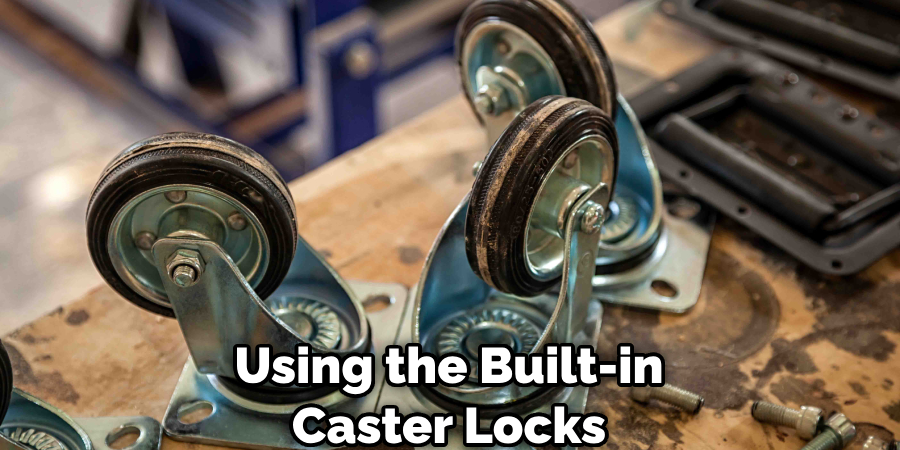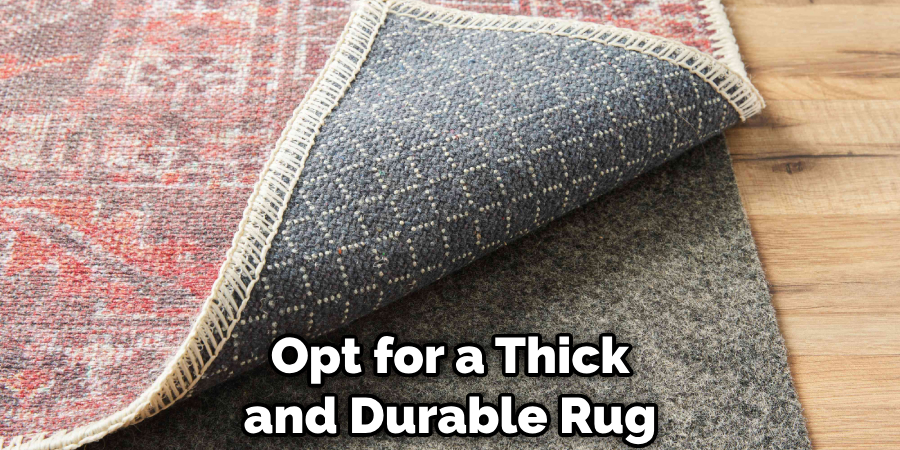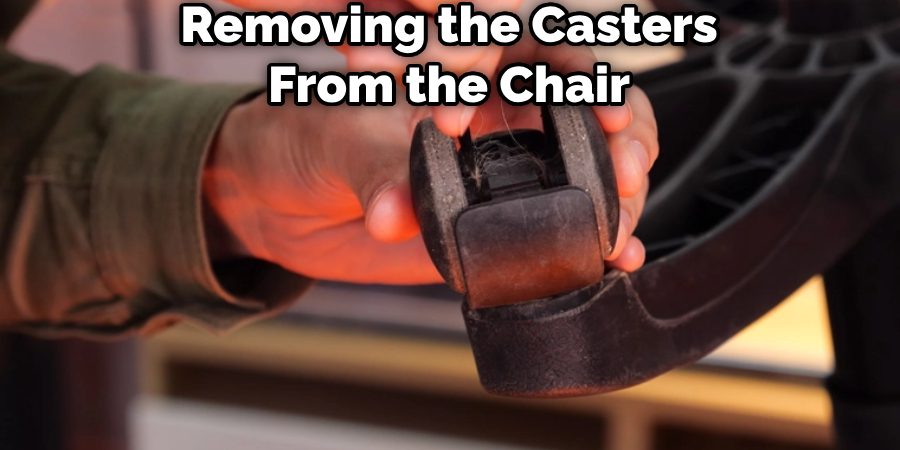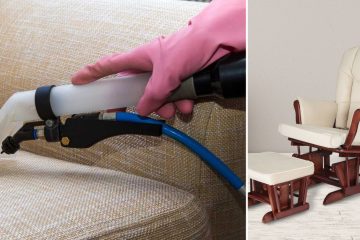Summary: Solving an irritating rolling office chair is easy with these effective DIY solutions. By removing wheels, adding leg caps, using a mat, or attaching a stopper strap, you can keep your computer chair stationary. Give it a try in your home or office!
As we spend more time working from home, having a comfortable and functional office chair is essential. However, dealing with a rolling chair that constantly moves can be frustrating and disruptive to your workflow. But fear not! In this comprehensive guide, we will explore various methods for how to make a rolling chair stationary, ensuring that you can work in peace and comfort.

Why Do Office Chairs Roll?
Before we delve into the solutions, let’s understand why office chairs roll in the first place. Most often, chair rolling occurs due to an imbalance or a lack of stability in the chair’s design. This imbalance can be caused by factors such as loose or missing casters, an inclined floor surface, slippery flooring materials, or mismatched wheels or casters. To prevent your office chair from rolling, it is crucial to address these underlying issues.
14 Effective Methods for How to Make a Rolling Chair Stationary
Here are 12 effective methods for how to make a rolling chair stationary:
Method 1: Remove the Chair Wheels
The most direct way is to completely remove the wheels (casters) from the bottom of the chair. To do this:
- Flip the chair upside down or on its side to access the bottom.
- Locate the wheels, usually 5 of them held in by plastic stems.
- Firmly twist and pry to pop the wheels off the stems.
Once removed, set the chair upright. It will now stay stationary when sat on.
Method 2: Lock the Casters
One of the simplest ways to make a rolling chair stationary is by using the built-in caster locks. Many office chairs come equipped with casters that have a locking mechanism. To activate the caster lock, locate the lever or switch usually located near the base of the chair. Engaging the lock will prevent the wheels from rolling, providing stability and preventing unwanted movement.

Method 3: Install Chair Leg Caps
For a more finished look, install rubber caps or covers where you removed the wheels. These screw in or glue on to hide the wheel stems.
Method 4: Hands-Free Brake Casters
If your office chair does not have caster locks, don’t worry! You can opt for hands-free brake casters. These innovative casters are designed to automatically engage when you sit on the chair and release when you stand up. The braking mechanism ensures that the chair remains stationary while you’re seated, eliminating the need to manually lock or unlock the casters.
Method 5: Place a Rug or Mat Under the Chair
Another effective method to prevent your office chair from rolling is to place a rug or mat underneath it. The friction between the chair’s wheels and the rug or mat will significantly reduce its ability to roll freely. Opt for a thick and durable rug or mat that can withstand the weight of the chair and provide a stable surface to keep the chair in place.

Method 6: Caster Stoppers
Caster stoppers are small, disc-shaped devices that fit over the chair’s casters, preventing them from rolling. These stoppers are easy to install and provide a cost-effective solution for keeping your chair stationary. Simply place the stoppers over the casters, and they will act as a barrier, preventing any unwanted movement.
Method 7: Convert to a Stationary Chair
If you prefer a completely stationary chair, you can convert your rolling chair into a fixed-leg or pedestal-based chair. This method requires removing the casters from the chair and replacing them with fixed legs or a stable base. Keep in mind that this conversion may be irreversible, so ensure that you are committed to the change before proceeding.

Method 8: Secure the Chair with a Strap
For a temporary solution to prevent your chair from rolling, consider using a strap to secure it. Loop the strap around the chair’s base and attach it to a sturdy object, such as a desk or cabinet, in your office. This method will provide stability and prevent the chair from roaming around unexpectedly.
Method 9: Use Foam Padding
Placing foam padding under the chair’s wheels can also help make it more stationary. The added thickness and grip of the foam will reduce the chair’s mobility on smooth surfaces and provide better stability. Experiment with different types of foam padding to find the one that works best for your chair and flooring.
Method 10: Opt for an Easy-Grip Chair
If all else fails and your current chair continues to roll despite your efforts, it may be time to consider investing in an easy-grip chair. These chairs are specifically designed to provide maximum stability and prevent rolling. Look for chairs with built-in features such as non-slip bases or sturdy leg structures to ensure a stationary seating experience.
Method 11: Ensure a Level Floor Surface
A sloping or uneven floor surface can contribute to the rolling of an office chair. If you notice that your chair tends to roll in a particular direction, check the floor for any irregularities. If possible, adjust the chair’s positioning or consider using floor-leveling techniques to create a more stable foundation for your chair.
Method 12: Check and Maintain the Casters
Regular maintenance and inspection of your chair’s casters are essential for preventing rolling. Ensure that all casters are securely attached to the chair’s base and in good condition. If any casters are loose or damaged, replace them promptly to maintain stability and prevent unwanted movement.

Method 13: Consider Alternative Flooring Options
If you are consistently struggling with a rolling chair on certain types of flooring, it might be worth considering alternative flooring options. For example, carpeted floors naturally provide more friction and grip, making it harder for the chair to roll. Alternatively, you can use floor mats or rugs specifically designed for office chairs to enhance stability.
Method 14: Explore Additional Accessories
There are several additional accessories available in the market that can further enhance the stability of your chair. These include anti-roll mats, adhesive strips, or gripper pads that can be applied to the chair’s wheels to increase traction. Explore these options to find the accessories that best suit your chair and flooring.
You Can Check It Out to Stop Office Chair From Rolling.
FAQs About How to Make a Rolling Chair Stationary
Can You Lock a Rolling Chair?
Yes, it is possible to lock a rolling chair. Most rolling chairs come with a lever or mechanism that allows you to lock the wheels in place. This is useful when you want to prevent the chair from moving while you are sitting or working. To lock the chair, you typically need to push down on the lever or engage the locking mechanism, which will prevent the wheels from rolling freely. You simply release the lever or disengage the locking mechanism when you want to unlock the chair and allow it to roll again.
Do You Need a Mat for a Rolling Chair?
Using a mat for a rolling chair is not a requirement, but it is highly recommended. A mat serves several purposes. First, it protects the floor from scratches and dents that can be caused by the chair’s wheels. It also provides a smoother surface for the chair to roll on, making it easier to move around. Additionally, a mat can provide some cushioning and support, which can be beneficial for your comfort, especially if you spend long hours sitting at a desk. Overall, a mat for a rolling chair helps protect your flooring and enhances the chair’s functionality and comfort.
What Are Roll Control Casters?
Roll control casters are a type of caster specifically designed to provide enhanced control and stability for rolling chairs. These casters are engineered with features that help prevent the chair from rolling or moving unintentionally. They typically have a locking mechanism that allows you to lock the wheels in place, preventing the chair from rolling freely. This feature is particularly useful when you need to stay stationary or maintain a fixed position. The roll control casters also offer smooth and controlled movement when unlocked, allowing you to easily maneuver the chair without any sudden or uncontrollable rolling.
What is a Chair That Moves on Wheels Called?
A chair that moves on wheels is commonly referred to as a rolling chair or a caster chair. The wheels attached to the base of the chair, known as casters, allow for easy mobility and movement across various surfaces. Rolling chairs are commonly used in office spaces, conference rooms, and home offices, as they provide the convenience of being able to move around without having to get up from the chair. The wheels on a rolling chair can vary in design and functionality, offering different levels of stability, control, and floor protection.
Conclusion
Dealing with a rolling office chair can be a major source of frustration and distraction. However, with the right methods and techniques, you can transform your rolling chair into a stationary and comfortable seating option. From utilizing caster locks to converting to a fixed-leg chair, each method offers its benefits and can be tailored to your specific needs. Choose the best method for you and enjoy a productive and stable work environment. Remember, a stationary chair is a happy chair!


